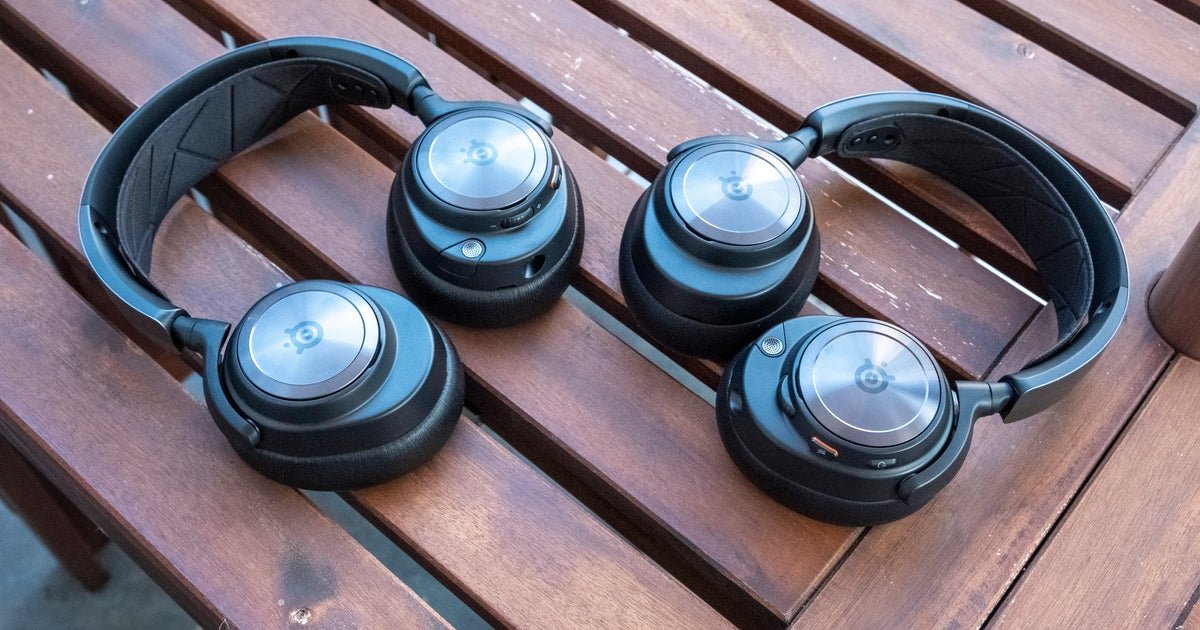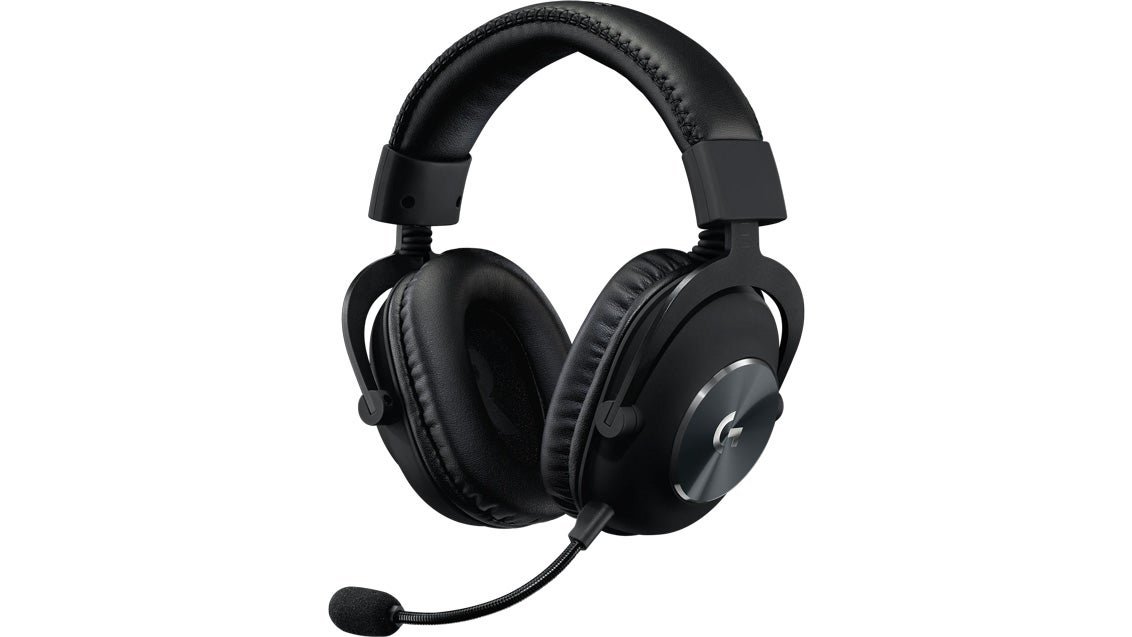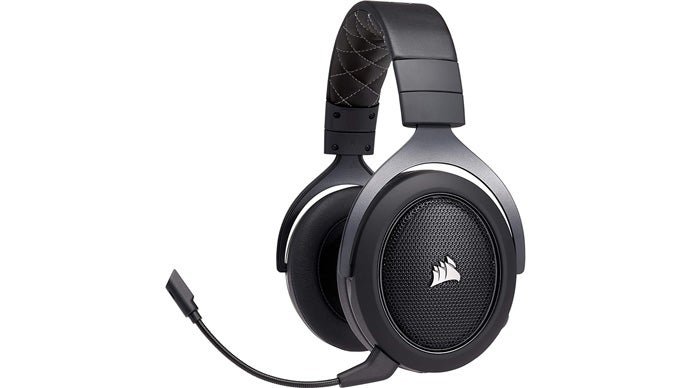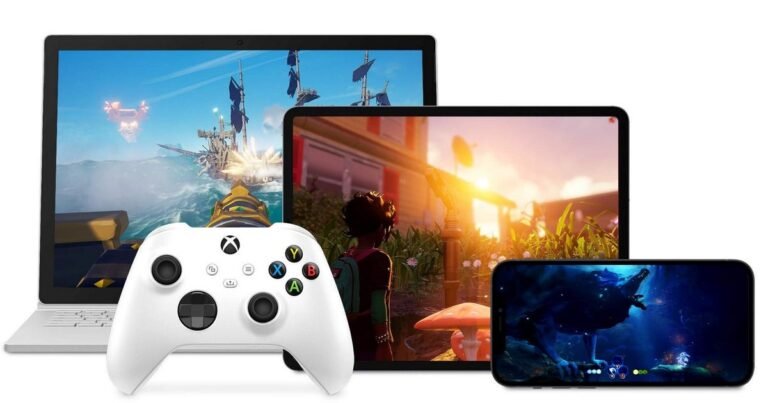
A good pair of headsets is essential for victory in many games – especially in shooter games like Valorant, Fortnite, and CSGO – where hearing a single step from a wandering enemy can make the difference between a delicious chicken dinner and a humiliating defeat. That’s why we have gathered our top recommendations for the best gaming headsets for the money available on the market today.
Whether you prefer the lower cost and audio fidelity of wired headsets or the convenience of wireless headsets, we have everything you need. We have also included recommendations for PS5, Xbox Series X/S, Switch, and PC, so, no matter what system you play on, you can find at least a few top-notch gaming headsets to consider, all much better than the built-in speakers on your TV or monitor. We will also consider open and closed design headsets, as the former tends to offer a wider soundstage, conducive to locating enemies, while the latter minimizes sound leakage to ensure that you don’t disturb your apartment mates.
Selection Criteria
Before we get to the recommendations, it’s worth mentioning what we look for when choosing the best gaming headsets. We want a comfortable pair of headsets that you can wear for hours without discomfort, perfect for long gaming sessions. Sound quality is also crucial, so you can hear every sound clearly and be fully immersed in the game. Naturally, you also need to communicate with your friends or teammates, so a built-in microphone with good noise suppression is also important. Finally, we would also like to see support for multiple systems, so if you have a console and a PC, or multiple consoles, you can use the same headsets on both.
Best Gaming Headsets of 2023
- SteelSeries Arctis Nova Pro Wireless – best wireless gaming headset
- Razer Blackshark V2 / V2X – best wired gaming headset
- Corsair HS80 RGB Wireless – second best wireless gaming headset
- Epos H3 Hybrid – second best wired gaming headset
- Wireless Xbox headsets – best headset for Xbox Series X/S
- Logitech G Pro X Wireless – best headset for PS5
- Corsair HS70 Bluetooth – best headset for Switch
- Astro A10 Gen 2 – best value for money gaming headset
- Roccat Elo X Stereo – best budget gaming headset
- HyperX Cloud Flight – best budget wireless gaming headset
- Astro A40 TR with MixAmp Pro – best open design gaming headset
- Epos GTW 270 Hybrid – best in-ear headsets for gaming
- Nuraphone + Gaming Microphone – best noise-canceling headset for gaming
- Sennheiser GSP 600 – best durable headset for gaming
- Creative SXFI Gamer – best surround sound in a gaming headset
- Asus ROG Delta S – best high-resolution headset for gaming
- HyperX Cloud Orbit S – best planar magnetic headset
- Bonus: Sound Blaster G3 – best DAC for PC, consoles, and portable devices

Each model comes with a base station with two USB inputs, allowing you to connect to a console and a PC, or to two consoles, and quickly switch between the two sources. In the Xbox versions of the ANP and ANPW, one of the ports supports Xbox, but the headsets are otherwise identical. The base stations also serve as a DAC (for the wired version) and as a wireless transmitter/extra battery charger (for the wireless version), with a screen, a selector, and a button used to display sound and battery levels, select and modify EQ settings, among other functions.
The suspension fabric band that debuted on the original Arctis headsets is back to provide a comfortable fit, but a new frame design and three positions of the suspension band allow the headsets to fit a wider range of head sizes. The athletic foam has been replaced by synthetic leather to improve bass response and enhance passive noise isolation, which, along with a stronger clamping force, ensures that the headsets stay in the correct position. This clamping force is a bit strong at first, but quickly becomes comfortable, even during long gaming sessions.
The controls on the headphones have taken a step back, without a dedicated selector for game/chat mix, but the volume wheel can be pressed to switch between normal volume mode and game/chat mix mode. This is reflected in the base station, so it’s easy once you know how to do it. Interestingly, the wireless model has a separate multifunction button for Bluetooth, so you can independently connect the 2.4 GHz and Bluetooth sides of the headsets. It also comes with two batteries, so you can use one while the other is charging in the base station – very clever. The ANC is a smart addition, but it doesn’t quite match dedicated ANC headsets like those from the Bose QuietComfort or Sony WH-1000XM line.
In terms of sound, the Arctis Nova Pro stands out. The bass, treble, and mids are all well represented, with extremely good detail and a wide soundstage for closed-back headsets. The wired model sounds even better, thanks to a high-quality Sabre DAC built into the base station. The microphone performance is also great when SteelSeries’ AI noise-cancellation functionality is used on PC, but is only reasonable otherwise.
These are definitely high-quality headsets, but if you can take advantage of the features – dual inputs, great base stations, and wide compatibility – then the SteelSeries Arctis Nova Pro and Nova Pro Wireless are well worth it.
### Best wired gaming headset: Razer Blackshark V2 / V2X
The Razer Blackshark V2 at €63.84 is the best wired gaming headset for the money we tested. First, these headsets are a joy to use for gaming or music, with a wide soundstage, accurate sound, and good sound location provided by newly designed 50mm drivers that Razer says will also be used in future headsets. These are stereo headsets, which we recommend for competitive gaming, but there is also a 7.1 surround sound mode with “THX Spatial Audio” available for games where you want maximum immersion. The BlackShark V2 microphone is also quite reasonable, although we recommend a higher-quality alternative for streams.
The design of the BlackShark V2 also deserves praise. First, the ear cups are well sealed to block out distracting background sounds – useful whether you’re playing Valorant or trying to work from home with your spouse. The mesh-covered ear cushions remained comfortable for hours, certainly aided by the lightweight of the headsets – only 262 grams. There’s a handy volume button on the left ear cup, and the microphone is removable. The BlackShark V2 also lacks RGB lighting, only green cables and a discreet Razer logo on each ear cup, revealing the focus of these headsets for gaming.
In terms of connectivity, three options are provided: dual 3.5mm (for PCs), single 3.5mm (for PC, mobile devices, Switch, PS5, and Xbox), and USB-A (for PS5 and PC). This means you can use these headsets on the go as easily as at home on your PC or console. The USB connection is made through an included dongle that adds simulated 7.1 surround sound capabilities, microphone settings (like a noise gate and side tone), and compatibility with Razer’s Synapse software.
If you can do without all that, consider instead the Razer BlackShark V2 X at €62.59, which removes the sound card to reach a much more competitive price point. (There is also the Razer BlackShark V2 Pro at €96.65, which adds wireless connectivity with the same excellent sound and comfort, making it a good alternative to the SteelSeries Arctis 7X and 7P in the “best wireless headset” category).
### Second best wireless gaming headset: Corsair HS80 RGB Wireless
The Corsair HS80 RGB Wireless headset at 149.98€, compatible with PC and PS5, represents something exciting: a new design philosophy from the peripherals giant Corsair, which closely resembles the acclaimed SteelSeries Arctis headset series. The Arctis line is defined by its ski goggle suspension style headband, athletic fabric, and a retractable microphone – and Corsair has hit two out of three here, opting for a flip-to-mute microphone instead of a retractable one. The suspension headband and padded fabric ear cups work wonderfully together on the HS80, as expected, and have proven to be comfortable with glasses even during long gaming sessions – once properly adjusted to the head, which requires a bit of trial and error. The microphone chosen by Corsair also performs well for a wireless option, automatically muting when raised, and although it is a bit flexible, I did not find it distracting.
In addition to its physical features, the Arctis series is known for its usability, and the HS80 also excels in this aspect. The volume dial and power button on the left ear cup are easy to find, although there is no game/chat mix button on the right ear cup, as with most Arctis sets. The implemented software solution works well and even replaces the usual beeps with specific voice instructions. The battery life is reasonable, around 18 hours, at least when RGB lighting is turned off, and recharging is done (in several hours, it must be said) via USB-C. You can use the headsets wired while charging, at least, so your gaming sessions are not interrupted if you forget to charge the battery after a few days – and this also allows for high-resolution audio up to 24 bits and 96 kHz, if you prefer. The wireless range is good, but not excellent – I was able to maintain a connection in rooms directly above or below my office, but could not go to the opposite side of the house without interruptions. Fortunately, the headsets reconnect quickly.
Finally, the audio quality. The HS80 has a pleasant and neutral response, with the only significant criticism being the lack of bass development, which makes some genres or cinematic moments a bit lacking. This can be adjusted in the iCUE software on PC, but I was satisfied enough with the headsets in default settings. The HS80 also gets loud enough and sound location seems good to me – I had no trouble hearing enemy footsteps while completing my task of achieving the Dark Matter achievement in Call of Duty: Black Ops Cold War. On PS5, you can use the console’s 3D audio (as with any other USB or 3.5mm headset), while on PC you get a free license for Dolby Atmos while the headsets are connected. Personally, I’m not a fan of surround sound for competitive gaming, but for watching movies or playing single-player games, it works beautifully.
Overall, the Corsair HS80 RGB Wireless is a great redesign effort from Corsair and, in my opinion, surpasses their previous efforts at a similar and below price. Although relatively expensive now, on Black Friday it can be an excellent option for around 125€ – and even at the full price of 150€, its comfort, usability, and flexibility make it an excellent choice for PC, PS4, or PS5.
### Runner-up, best wired gaming headset: Epos H3 Hybrid
Our second-place in the best wired gaming headset category is the Epos H3 Hybrid at 152.36€. This headset features Bluetooth, USB, and 3.5mm connectivity, while the cheaper Epos H3 model at 70.99€ is wired only. The sound quality is impressive, with a neutral profile and lots of detail, and the microphone is one of the best we’ve heard in this price range. The Hybrid model can simultaneously use its wired and Bluetooth connections, which is great if you’re playing on a console with your friends on Discord or if you just want to listen to your own music.
The industrial design is also excellent, being lightweight and comfortable even when wearing glasses, and despite the more plastic construction, the H3 headsets still feel sturdy in hand. The volume dial on the H3 Hybrid model ear cup has also been improved over the standard H3 models, which was a bit difficult to turn with one finger – this model spins freely. I also like the magnetic microphone arm (and therefore easily removable), which is great if you’re gaming on PC with an external USB or XLR microphone and prefer a lighter headset.
The Epos H3 Hybrid and the Epos H3 are excellent translations of the company’s traditional strengths – audio quality, build quality, and comfort – to a more affordable price point, and therefore deserve our second-place ranking. The standard H3 model is currently a much better value option, but we hope that the recently released Hybrid will become more accessible in the future.
### Best headset for Xbox Series X/S: Xbox Wireless Headset
The Xbox Wireless Headset is the best headset for Xbox Series X/S, offering a seamless gaming experience. With Bluetooth connectivity, USB-C charging, and customizable audio settings, this headset provides high-quality sound for immersive gaming sessions on Xbox consoles. The sleek design and comfortable fit make it a top choice for Xbox gamers looking for a reliable and versatile headset.
The official Xbox Wireless headset at €119 is the best headset we’ve tested for the Xbox Series X and Series S. It is lightweight and comfortable for hours of use, has good battery life, and features easy controls, with each earcup rotating to adjust the volume or the mix between game sound and chat sound. It connects to the Xbox without the need for a dongle, using a low-latency 2.4GHz wireless connection, and can also connect to your smartphone via Bluetooth simultaneously – perfect for listening to music or chatting on Discord while gaming.
This is by far the cheapest headset to offer this feature, and the Xbox Wireless Headset also excels in the fundamentals, with great sound (though with an emphasis on bass), good adjustability (with custom EQ settings), and a choice of three surround sound modes (including a free trial of Dolby Atmos). We are confident that the Xbox Wireless Headset is by far the best value in wireless headsets for the Xbox on the market.
### Best headset for PS5: Logitech G Pro X Wireless

Our favorite headset for the PlayStation right now is the Logitech G Pro X Wireless at €175, which uses a 2.4GHz USB dongle to connect to the PS5, PS4, PC, or Switch (in docked mode). This multiplatform headset offers great comfort for both glasses and non-glasses wearers, with the option of velvet or memory foam ear cushions, as well as impeccable build quality with many visible metal components. The 50mm drivers provide neutral sound, with a slight emphasis on mids that can help highlight footstep sounds. Surround sound is provided by 3D Audio on the PS5 or DTS Headphone:X on PC; I much prefer this setup as it tends to provide more consistent results than each headset manufacturer creating their own simulated surround sound solution in the headset itself.
Wireless headsets often suffer in terms of microphone quality, but the solid hardware here, along with the addition of Blue Voice software on PC, make this one of the best options in terms of sound in this category. Battery life is reasonable, around 20 hours, with easy (though not very fast) charging via USB-C. One area I would like to highlight in particular is usability; Logitech has done a good job incorporating a large number of controls (power, volume, mute microphone) on a single earcup, ensuring each one has a distinct feel. Overall, the G Pro X is a great choice for any competitive gamer on the PS5 or PC.
### Best headset for the Switch: Corsair HS70 Bluetooth

The Corsair HS70 Bluetooth (€80.95) is the perfect headset for Nintendo’s unconventional approach to multiplayer gaming, which restricts group chat to a smartphone app. With the HS70, you can connect it to the Switch via 3.5mm and your phone via Bluetooth simultaneously, allowing you to listen to game audio and chat with your friends comfortably. You can use the HS70 with PC (USB, 3.5mm, BT), PS5 (USB, 3.5mm, BT), and Xbox Series X/S (3.5mm), giving this headset excellent flexibility. The same simultaneous wired + Bluetooth connection also works if you want to use Discord while playing on the console; perfect for cross-platform Warzone games.
Our tests have shown that the HS70 is comfortable, although it leaves the ears a bit warm after each gaming session, with well-designed controls and convenient USB-C charging. The audio quality is slightly better than the Arctis 1 Wireless, which was previously our top choice for the Switch, with a V-shaped frequency response that emphasizes bass and treble at the expense of mids; microphone quality is also good, especially when used wired.
As an alternative, the Arctis 1 Wireless for Xbox (€119.99) offers full wireless connectivity for the Switch, as well as for Xbox Series X/S and PS5. This makes it a great option if you’re looking for a lighter headset and don’t need Bluetooth support for voice chat.
### Best value gaming headset: Astro A10 Gen 2

The Astro A10 Gen 2 ($55.64) is one of the most impressive gaming headsets we’ve tested at Digital Foundry, offering a lightweight design, universal wired compatibility, and good sound. The headset uses smaller 32mm drivers than usual, helping it achieve a weight of just 240 grams, making it comfortable on the head for hours on end. The ear cups are proportionally a bit smaller, making them more “on-ear” than “over-ear,” but still provide a good amount of noise isolation and bass reproduction. The overall headset signature is quite neutral, without the emphasis on bass that most gaming headsets have, making them a better choice for competitive gaming.
In terms of features, there is a decent flip-to-mute microphone and an in-line volume control on the simple black plastic 3.5mm cable; a 3.5mm splitter adapter is provided for PCs. There is no integrated surround sound, as expected from a 3.5mm headset, but you can use Sony and Microsoft surround sound solutions on PS5, Xbox consoles, and PC. Astro has also taken steps towards repairability, with replaceable ear cushions, headband pads, and cables, which is good to see.
The A10 Gen 2 is offered in “PlayStation/PC” and “Xbox/PC” variants on Amazon, but I believe this is related to coloration, as they can be used with practically anything with a 3.5mm input – PS5 and PS4, Xbox Series and One consoles, Switch (in handheld mode), tablets, phones, and of course, PCs. There are five color options to choose from – Black, Gray, White, Mint, and Lilac – and each style has some details here and there to add visual interest. Overall, it’s a good-looking package, and despite the plastic construction, they seem relatively sturdy and resistant to bending as well.
The Astro A10 Gen 2 is an impressive entry-level headset, and with the prospect of eventual sales and price reductions, these headsets could become even more valuable.
The Roccat Elo X Stereo ($64.57), Roccat’s entry-level headset, is much better than its price suggests. It connects to Xboxes, PlayStations, Switch, mobile devices, and PCs with a simple 3.5mm wired connection and features a decent detachable microphone. We found the headset to be lightweight and comfortable for hours on end, thanks to its memory foam ear cushions – and it even lives up to its ‘Glasses Relief’ tag, with no additional discomfort for glasses wearers. You can’t expect incredible audio quality from a headset in this price range, but the larger-than-average 50mm drivers still make it sound better than most built-in TV or monitor speakers and many entry-level headsets as well. For $64.57, this seems like a winner.
The HyperX Cloud Flight ($119.00) is an excellent wireless headset for the money, with the regular Cloud Flight offered for PS5, PS4, and PC, while the similarly named CloudX Flight ($114.95) plays a similar role for Xbox players. There is also a ‘Cloud Flight PS5,’ which features a blue color scheme but is functionally identical to its red predecessor. All these headsets offer balanced sound, courtesy of the 50mm drivers, 30 hours of battery life (with the lighting off), and a detachable microphone capable of isolating your voice even in noisier environments. The sound quality is also impressive, with a relatively balanced sound profile with a subtle bass boost. The sound imaging is good, but the soundstage is relatively narrow and does not block out much external noise. There is no surround sound, but you can get it for free on PC (Windows Sonic) or PS5 (3D Audio).
The lightweight (300 grams), memory foam ear cushions, and moderate clamping force mean these headsets are comfortable for extended use, and the plastic construction feels relatively sturdy in hand, with metal sliders for added durability. The rotating ear cups are useful if you want to let your ears rest for a while but still want to hear key game information. What’s not so convenient is the Micro USB charging, which has been retained even in the new PS5-branded model and is a bit annoying in 2023, where almost everything is USB-C. You will also need to press the power button twice after turning it on to turn off the lighting – I wish the headset would just remember this setting, as the lighting doesn’t add anything to the experience but significantly reduces battery life.
Overall: a comfortable headset with good gaming audio features and long battery life, but with some quirks that could be improved in future models.
The best open design gaming headset we’ve tested so far is the Astro A40 TR with MixAmp 574.22€). These premium wired headsets are comfortable, with soft memory foam cushions and a lightweight design, making them easy to wear for hours on end – even for those who wear glasses.
Sound-wise, the default tuning is warm, with good emphasis on the low and mid-low tones, but the Astro Command Center software makes it easy to find a more neutral EQ setup. The sound imaging is quite good, helping to locate enemies in-game, and there’s the option for both stereo and simulated 7.1 surround sound. As with all open design headsets, some sound leakage occurs, and you’ll also be able to hear background noise, making them more suitable for quiet environments. The microphone is also of good quality and can be moved to one side of the headset or removed completely, if preferred.
The headset is available on its own, but we recommend getting the version with the included MixAmp. The MixAmp offers convenient buttons for adjusting volume and balance between game and chat, compatibility with the Astro Command Center software, as well as easy connections to PCs and Xbox One or PS4 units, depending on the variant you purchased.
Although not strictly gaming headsets, Sennheiser’s HD 599 137€) and HD58X Jubilee (411.10€) headsets are also great options. These open design headsets offer neutral sound reproduction and a wide soundstage, with velvet cushions and a lightweight design that remains comfortable for hours on end. These headsets do not come with a built-in microphone, so we recommend pairing them with one of the best gaming microphones, such as a ModMic attachment or a standalone unit like the Blue Yeti.
###Best in-ear gaming headset: Epos GTW 270 Hybrid
The Epos GTW 270 Hybrid 147.07€) is quite special: a set of wireless in-ear gaming headsets. Although we normally associate these Airpods-style headsets with Bluetooth – which is also offered here – the GTW 270 also comes with a USB-C dongle, unlocking a low latency aptX connection on PC, Switch, Android smartphones, and PlayStation consoles.
I tested the headsets in competitive Counter-Strike matches and found that the connection remained stable, with no discernible delays compared to a wired headset. And while in-ear headsets never have a super wide soundstage, the reasonable imaging here helps to locate enemies by the sound of their footsteps. Otherwise, the sound is impressive, as you would expect from the Epos name, with surprisingly present bass, rich mids, and crisp highs. You can adjust the equalizer and enable simulated surround sound using the EPOS app on PC, if preferred.
In terms of isolation, the in-ear design means there is little sound leakage in both directions, allowing you to focus on the game. There is no active noise cancellation here, but it is not really necessary. Isolation requires a good fit with the ear tips, with three different sizes provided in the box. I found the in-ears comfortable to wear for a few hours, but my ears got a little sore afterwards. The in-ears will last about five hours before needing a recharge in their metal case, which offers an additional 20 hours of battery life and recharges via USB-C. The GTW 270 will automatically turn off if the right earbud is removed from the ear, helping to preserve battery life throughout the day.
There is a lot to like here – the GTW 270 is comfortable, long-lasting, and has great sound, with a unique low latency option that makes it the best in-ear gaming headset we’ve tested.
Alternatively, consider the Edifier Neobuds Pro 132.93€). These in-ear headsets offer a low latency gaming mode (80 ms) via Bluetooth, without the need for a USB-C dongle. The sound reproduction here is impressive, thanks to the combination of a balanced armature driver for bass and a dynamic driver for mids/highs. Notably, these units offer active noise cancellation – including various intensity levels and an ‘ambient’ mode to let in external noise when you’re listening to a delivery or having a conversation – giving them some extra tricks that are not matched by the GTW 270 Hybrid. Considering that both headsets are available at a similar price in the UK (and the Neobuds Pro are much cheaper in the US), they are worth considering for gaming.
###Best noise-cancelling gaming headset: Nuraphones + Gaming Microphone
The Nuraphone (270.27€) is unconventional but also sounds phenomenal. The idea here is that the Nuraphone uses in-ear drivers for mid and high tones, as well as over-ear drivers for bass, while also offering strong passive and active noise cancellation. The recently released Gaming Microphone turns Bluetooth headsets into a wired 3.5mm operation (suitable for all consoles and PC), but adds one of the best microphones in a gaming headset.
The initial setup is quite engaging – you will be prompted to use the Android or iPhone app to develop a custom EQ based on the shape of your ears, and then update the headset firmware over a quiet 20-minute period if an update is available. After that, you can attach the Gaming Microphone and connect them to your PC – a 3.5mm splitter is not provided, so you will need to purchase your own if your PC’s 3.5mm audio port does not support combined microphone/headphone connections. You will be greeted by name, with a reading of the current battery life (required for ANC), and then the headsets will start working.
Fortunately, the result of this long setup process is excellent audio with accurate imaging – as well as a significant bass response if you slide the slider in the app all the way to the end. The in-ear part of the headset is quite comfortable as well, with three tip sizes included in the box, but they still may not fit everyone. This is truly one of those things you need to experience, as I honestly did not expect the level of comfort and clarity I got. If you are willing to pay the significant price, you will be rewarded with a high-quality Bluetooth noise-canceling headset for mobile use and the best noise-canceling gaming headset we have tested.
Best Tough Gaming Headsets: Epos Sennheiser GSP 600
If you are constantly breaking your headsets by running over them in your chair or throwing them in a fit of rage, then something a bit more durable may be just what you are looking for. The best build quality we found in a gaming headset we tested is the Epos 100.35€ GSP 600 – which is also available in white as the GSP 601 and in blue/beige as the GSP 602. Regardless of the color you choose, the headset is extremely sturdy due to its metal and plastic construction.
Naturally, something well-built but of poor quality is not worth buying – but fortunately the GSP 600 is also a really good wired headset. It offers incredible noise isolation, thanks to its thick ear cushions and moderate clamping force, making it easy to get lost in a virtual world. The sound quality is also good, with a slight emphasis on bass that makes single-player cinematic games fantastic – although this means that subtle highs and mids may be lost, making it less suitable for competitive multiplayer games like CSGO, Valorant, or Warzone. The retractable microphone works well enough, and the sturdy volume wheel on the right ear makes it easy to adjust the sound between battles. Overall, it is a solid option – commensurate with its premium price.
Best Surround Sound in a Gaming Headset: Creative SXFI Gamer
The Creative SXFI Gamer (161.61€) offers one of the best surround sounds we have ever experienced in a gaming headset. Interestingly, it slightly alters the implementation of surround sound based on the topology of your ear, which it calculates based on photos of your ear that you provide through the company’s smartphone app (a bit unstable). This provides a truly immersive sound environment, perfect for enjoying single-player gaming. If you prefer something more competitive, there is a battle mode that emphasizes sounds like footsteps and reloads to help you locate your opponents in Warzone or Valorant. I found this more useful in games with more detailed soundscapes, like Warzone and Battlefield 5, as competition-focused games like CSGO and Valorant already have a fairly pronounced audio mix that makes it easy to locate a wandering misstep.
Even with its special modes disabled, the SXFI Gamer still impresses. The headset is relatively comfortable to wear for long periods, with adequate ear cushions, and the clamping force here is appropriate. The microphone has a built-in plosive filter that works well, although the microphone is more sensitive to correct positioning than others I have tried. The USB-C connection means that audio processing functions are handled internally, rather than relying on motherboard audio that may be questionable, and it also allows for tasteful RGB backlighting. The ergonomics are good, with well-differentiated buttons, supported by an audible confirmation of the activated mode and a smooth volume wheel. The main complaint I had was regarding the cable, which produces a lot of noise when handled or rubbed on the edge of your desk. Given that it seems to be a common USB-C cable, replacement could be an option if this also bothers you. Overall, the SXFI Gamer is a strong headset that delivers on its key promises without major stumbles. If good surround sound implementation is essential to you, then the SXFI Gamer is definitely worth trying.
If you have a higher budget, the ROG Theta 7.1 (380€) is another USB-C gaming headset that offers even better surround sound implementation, thanks to four discrete ESS 9601 drivers – three 30 mm drivers for the center, rear, and sides, respectively, and one 40 mm driver for the front. This provides rich and full-bodied sound, ideal for listening to music or playing immersive single-player games. Convenient volume controls on the ear cups, a high-performance “AI-powered” microphone, and RGB lighting are also included, fulfilling all the requirements for a high-quality gaming headset. Although the ROG Theta sounds great, the heavyweight of the headset makes it tiring for long gaming or listening sessions. The USB-C and USB-A connectivity allows for easy use with PC, PS4, Switch, and Android smartphones, but the thick cables coming out of each side of the headset are hard to ignore. Despite these drawbacks and a relatively high price, the ROG Theta is an intriguing option.
Another possibility for surround sound lovers is the JBL Quantum One (185.99€). This headset has several new features, including active noise cancellation and an HRTF surround sound mode that adapts to each user based on measurements taken by a special in-ear microphone used under the headset itself during setup. Unfortunately, this latter mode did not work well for me, with the initial setup process playing extremely loud noises in my ears, pausing and repeating ad infinitum for about 10 minutes. Later, I pushed the earpiece even further inside and completed the setup successfully, but the results were not significantly better than the default tuning.
Despite this initial problem, the other surround sound modes were better, and features like head tracking were quite fun to experience for the first time. The headset’s acoustic performance was also solid, with good sound imaging, although the relatively heavy weight of the headset made it uncomfortable for me during long gaming sessions. However, other people who tested the same headset found the surround sound much more immersive and the fit more comfortable, so I think the Quantum One is still worth trying.
### Best high-resolution headset: Asus ROG Delta S
There are many positives in the Asus ROG Delta S, which costs 154.87€. Its audio credentials are impressive, offering support for high-resolution audio and MQA through services like Tidal, and that is probably what contributes to its high price. The 50mm drivers provide detailed and neutral sound, with much less prominent bass than the average gaming headset. This means that some impactful moments in games lose a bit of their impact, but the clarity is unmatched.
You can adjust the mix with a graphic equalizer and various presets in the provided Armoury Crate software, which also allows you to choose RGB lighting effects (switched between ‘on,’ ‘off,’ and ‘reactive’ through a simple hardware switch). The microphone has access to Asus’ AI features for unwanted background noise cancellation, and they work well – but it loses a bit of detail and clarity with that activated. The Armoury Crate application is only available on PC, but you can use the headset through its wired USB-C connection on Android, PS4, and PS5 as well.
In addition to audio quality, this is one of the most comfortable headsets I have used in years, with a lightweight design (288g), D-shaped ear cushions, and the perfect amount of clamping force. I usually can only wear headsets for a few hours before my ears start to hurt, and I accepted that as a normal part of PC gaming while wearing glasses, but I didn’t face that issue here. I still took off the headset, but more because my ears got a bit warm – and that is resolved much more quickly! If you don’t like the feel of the standard synthetic leather ear cushions, there are also fabric replacements in the box to try.
### Best planar magnetic headset: HyperX Cloud Orbit S
The HyperX Cloud Orbit S is another excellent option that offers impressive planar magnetic drivers for a premium audio experience.
The HyperX Cloud Orbit S (€229.90) is a curious 3.5mm or USB gaming headset that combines the same planar magnetic drivers we love in the Audeze Penrose with some of the head-tracking surround sound technologies of the even more expensive Audeze Mobius. If you’re not familiar with either of these headsets, all you need to know is this: you get extremely precise sound, thanks to the planar drivers, while the head-tracking element adds a new dimension to music and cinematic games, adjusting the stereo mix as you turn your head. I played about 70 hours of Horizon Zero Dawn with this headset, and exploring new areas or experiencing new weather conditions like snow, storms, or rain often led me to spend a few seconds doing nothing, just listening. Of course, you can also disable this feature, as I like to do in more competition-focused games.
In addition to the sound, the Cloud Orbit S ticks all the relevant boxes. It is comfortable to wear for hours at a time (and longer if you’re lucky enough not to wear glasses), thanks to its thick cushions and balanced design, despite its weight. The microphone quality is top-tier among the headsets we’ve tested, and the extremely long cable allows you to move away from the computer without difficulty. There are still some quirks here – like the need to manually connect a wired headset and potentially reset audio devices in applications like Discord – but overall, everything works as it should. The only sticking point is the price, but that’s pretty much a feature of planar magnetic devices. For the money, you get something quite special – and if you’re going to use the head-tracking feature, it may be worth choosing this over the wireless Audeze Penrose.
Bonus: Best DAC for PC, consoles, and portable devices: Sound Blaster G3
There are many excellent DACs/AMPs for use on desktop and portable PCs, but those that easily support consoles like the PlayStation 4 and Nintendo Switch are much rarer. The best DAC for consoles we’ve tested so far is the Sound Blaster G3, which costs €39.48, a small USB-C dongle that offers a lot of functionality in a compact and reasonably priced package.
Let’s see what’s included. At the bottom of the device, there are three inputs for headsets, microphones, and optical (via a small adapter cable), while at the other end is a USB-C plug that can be converted to regular USB (with another included adapter). This setup covers the PS4, Switch, and all sorts of computers, but while the Xbox is supported through the optical input, you won’t be able to use voice chat here.
The left side of the device allows you to mute or adjust the microphone volume, while the right side allows you to adjust the headset volume. There’s also a switch here; when activated, you can adjust the mix between game volume and chat on the PS4 or PC – so you can lower the volume of your annoying teammates to focus on the game, or vice versa. Finally, there’s a button on top that activates another important feature, the integrated footstep amplifier mode, intended to give you an edge in competitive shooting games.
The complete package works well, with every setting you need at your fingertips. It’s great to be able to adjust things like chat mix or activate the footstep amplification setting without needing to dive into the game menus – something that will likely get you killed in games like Call of Duty Warzone. The increase in audio quality is evident from the start, and you also have the ability to customize your equalization (either manually or by selecting presets per game) using apps on Android, iOS, or Windows.
The Sound Blaster G3 is a definite investment, but it’s also something you can use with a wide range of consoles and computers, or even Android phones, and you’ll get some benefit even when listening to music or playing non-competitive games. So, if you want to take audio quality seriously and are using wired headsets, the G3 is a sensible purchase.
FAQs
Is it worth using 5.1 or 7.1 surround sound?
It depends. If you want to immerse yourself in a game or movie, the virtual surround sound mode offered in many gaming headsets can be fun to use. You can even add surround sound processing to headsets that don’t have it on Windows 10 PCs and Xbox One using Windows Sonic or Dolby Atmos for Headphones. However, if you’re looking for surround sound to gain a competitive advantage, my recommendation is to keep surround sound turned off – the processing that tries to simulate surround sound often makes it harder to hear footsteps or other quiet audio cues, adds delay, and tends to remove detail. Instead, look for headsets with a wider audio stage, like many open-design headsets, as this will really make it easier to locate your enemies on the map based on the sounds they’re making.
Should I buy wireless headsets?
Wireless headsets give you a lot of freedom, so you can make a sandwich in the kitchen or sit on the other side of the couch without worrying about taking off the headsets or rearranging the cables. However, you will have to recharge your wireless headsets every few days or weeks, and it is certainly annoying when your headsets run out of battery in the middle of a shootout. If you tend to sit in different positions while gaming or simply hate being tied to your desk, wireless is a sensible choice; otherwise, save money and the hassle of recharging and get wired headsets instead.
Which brands should I consider?
This list is far from exhaustive, but HyperX, SteelSeries, and Sennheiser headsets tend to be well respected. Razer, Logitech, Turtle Beach, and Astro have also produced some excellent headsets, although they have also produced some less impressive ones. However, gaming headsets can vary greatly from model to model, so it is best to look for reviews of the headset you are considering rather than choosing based solely on the brand.
Why do headsets that work for PS4, PS5, or PC not work for Xbox?
Mainly because the PlayStation 4/5 and PC support connection options that the Xbox One does not. The PS4 and PC both support headsets that connect via 3.5mm (either dual 3-pole or 4-pole), optical, Bluetooth, and USB. Meanwhile, the Xbox One did not include the 3.5mm connector in its first-generation controllers, requiring the use of an Xbox One Stereo Headset Adapter to add this option. The Xbox also only works with certified USB devices and uses its own proprietary wireless standard instead of Bluetooth, so you will need to look for headsets specifically marketed as compatible with the Xbox Series or Xbox One. The final option is to get a headset that connects via optical (S/PDIF), although this option is not available on the Xbox Series X or S. We have marked the connection options for each headset recommended above for your information.
How can I improve the sound of my existing headsets?
Good and completely non-invented question! Much of this depends on personal preference, but we prefer to disable audio “enhancements” like surround sound and aggressive equalization settings; we want things to be as “pure” as possible if we trust the intention of the sound engineers and headset designers. From there, you can use a DAC, which takes audio processing functions away from your PC or console and entrusts them to dedicated hardware, which tends to do a better job, eliminating jitter and altering sound characteristics for the better. Desktop or portable DACs like the Audioengine D1 or the Fiio E10K cost around €75 or less and can substantially improve audio quality. (We also highlighted the Sound Blaster G3 above!)
Of course, you can spend much more if you want to dive even deeper into the audiophile world, and we tested both the Astell and Kern AK HC3, which offers a similar interface to the Creative Sound Blaster and works wonders in making audio richer with a wider soundstage, for example, and also provides a microphone for calls. This will cost €245 and is currently Reece Bithrey’s DAC choice.



